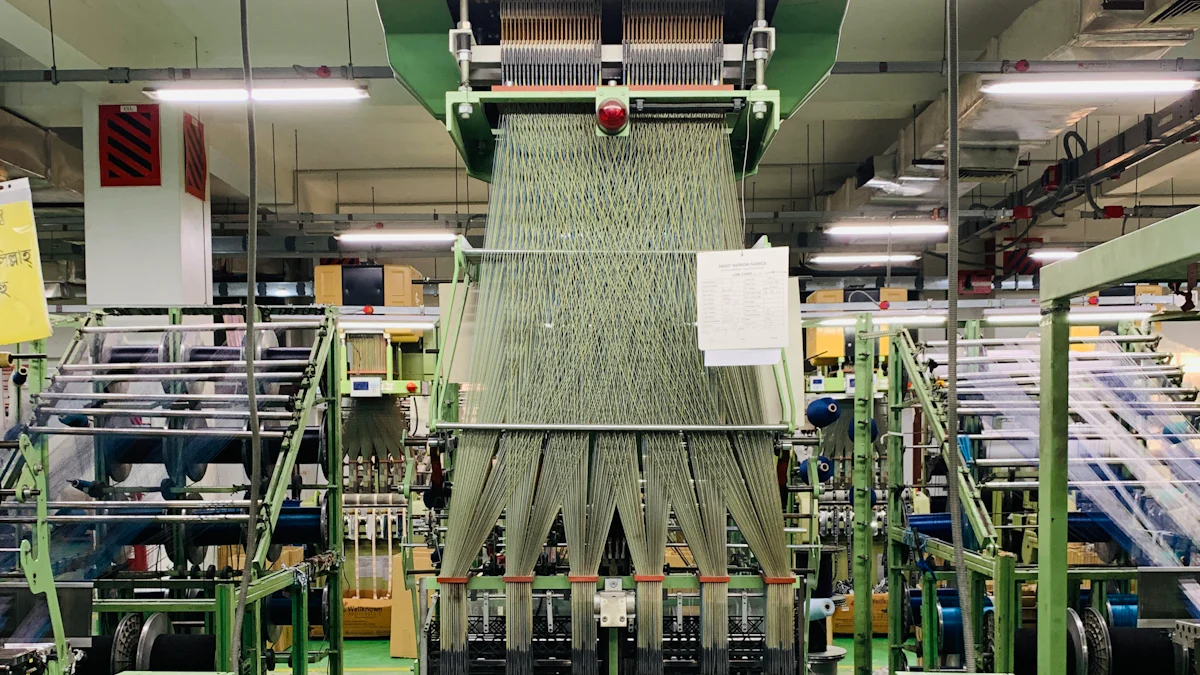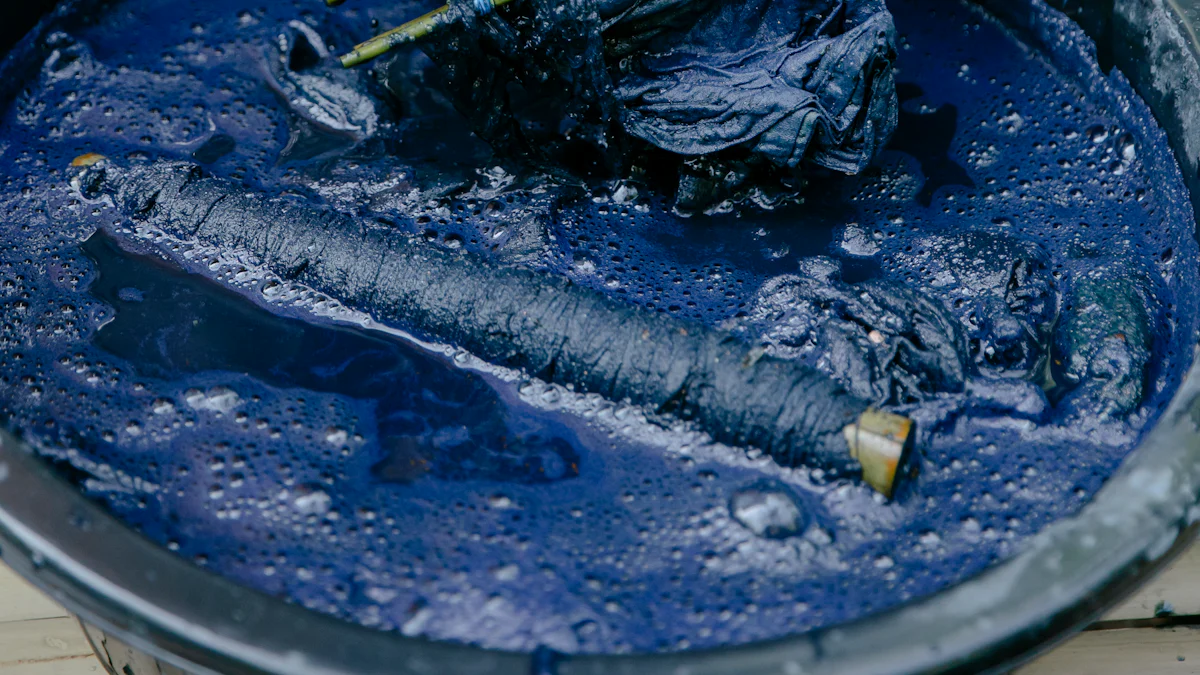
Have you ever wondered what happens to old polyester clothes? Recycling them is a game-changer. It transforms waste into something useful again. Right now, only about 14.7% of global polyester is recycled, while most comes from virgin resources. By recycling, we cut greenhouse gases by 42% and save energy, water, and even plastic bottles.
Learn more about recycle polyester fabric here.
Key Takeaways
- Recycling polyester fabric helps cut waste and save resources. It turns old clothes and plastic bottles into new items, promoting reuse.
- Using recycled polyester uses 50% less energy and lowers CO2 by 75%. This simple choice can greatly help the planet.
- New ideas like closed-loop systems and biodegradable options make recycling better. Working together, industries and people can make it successful.
The Science Behind Recycling Polyester Fabric

What Makes Polyester Ideal for Recycling
Polyester is a superstar when it comes to recycling. Why? It has some unique chemical properties that make it stand out. For starters, it resists chemicals, which means it can handle tough recycling processes without breaking down. It also absorbs very little moisture, so it stays durable even after multiple uses. Plus, polyester can be recycled both mechanically and chemically. Scientists are even exploring enzymatic recycling using special enzymes like Lipase and Cutinase. These features make polyester a great candidate for creating sustainable materials.
Mechanical Recycling: Process and Applications
Mechanical recycling is like giving polyester a second life. Here’s how it works:
- First, we collect used textiles from different places.
- Then, we sort them into categories.
- Next, we clean them to remove dirt and impurities.
- After that, we grade the textiles based on their quality.
- The real magic happens when we chop, shred, or grind the textiles into fibers.
- Some textiles that aren’t suitable for mechanical recycling move on to chemical recycling.
- Finally, the recycled fibers are repurposed into new products or used to manufacture fresh textiles.
The applications of mechanically recycled polyester are impressive. It’s used in clothing, home textiles, and even industrial products. This process helps us reduce waste while creating something useful.
Chemical Recycling: Process and Applications
Chemical recycling takes things a step further. It breaks down polyester into its basic building blocks, like monomers, through processes like depolymerization. This method allows us to recycle polyester repeatedly without losing quality. However, it’s not all smooth sailing. Chemical recycling requires high temperatures and energy, and it can release hazardous chemicals from textile finishes. Despite these challenges, it’s a powerful tool for creating high-quality recycled polyester fabric.
Comparing Mechanical and Chemical Recycling
Both methods have their strengths and weaknesses. Mechanical recycling is simpler and less expensive, but it often downgrades the quality of the fibers. On the other hand, chemical recycling produces fibers as good as virgin polyester, but it’s energy-intensive and costly. The choice between the two depends on factors like fiber quality, energy consumption, and the presence of dyes or additives. While mechanical recycling is great for quick and easy reuse, chemical recycling offers a more sustainable, closed-loop solution.
Environmental Benefits of Recycled Polyester Fabric

Reducing Plastic Waste in Landfills and Oceans
When I think about the mountains of plastic waste piling up in landfills or floating in oceans, it’s overwhelming. Recycling polyester fabric offers a way to tackle this problem. Did you know it often starts with PET plastic bottles and old textiles? These materials get a second chance at life instead of ending up as waste.
- Recycling transforms discarded PET bottles into new products.
- It keeps textiles in the loop, reducing the need for virgin materials.
- This process supports a circular economy, saving resources and cutting waste.
Global polyester fiber production jumped from 57 million tonnes in 2020 to 61 million tonnes in 2021. Recycled polyester production also grew, reaching nearly 9 million tonnes in 2021. While recycling rates are still low—16% in developed countries and even less in developing ones—it’s a step in the right direction.
Lowering Carbon Emissions and Energy Use
Recycling polyester doesn’t just reduce waste; it’s also a win for the planet’s carbon footprint. Producing recycled polyester uses 50% less energy compared to virgin polyester. Plus, it slashes CO2 emissions by 75%.
| Metric | Virgin Polyester | Recycled Polyester |
|---|---|---|
| Energy Use Reduction | 0% | 50% |
| CO2 Emissions Reduction | 0% | 75% |
| Water Consumption Reduction | 0% | 90% |
Switching to recycled polyester means fewer greenhouse gases and less energy consumption. It’s a small change with a big impact.
Conserving Natural Resources and Raw Materials
Every time we recycle polyester fabric, we conserve valuable resources. Virgin polyester relies on petroleum, a non-renewable resource. Recycling reduces this dependency. It also saves water and prevents fossil fuel depletion.
| Metric | Virgin Polyester | Recycled Polyester |
|---|---|---|
| Fossil Fuel Depletion | 0% | 66% |
| Water Scarcity Reduction | 0% | 76% |
By choosing recycled polyester, we’re not just cutting waste. We’re protecting the planet’s limited resources for future generations.
Challenges in Recycling Polyester Fabric
Microfiber Pollution and Environmental Risks
Microfiber pollution is a big issue when it comes to recycled polyester. During production, tiny fibers, called microfibers, are released into the environment. These microfibers don’t break down easily. They end up in oceans and even inside marine animals like fish and turtles. It’s heartbreaking to think about how this affects marine life. But it doesn’t stop there. Factory workers face health risks too. Breathing in or touching these microfibers can lead to respiratory problems or even cancer. This makes microfiber pollution a serious environmental and health concern.
Energy Demands of Chemical Recycling
Chemical recycling sounds like a great solution, but it’s not perfect. It uses a lot of energy and chemicals, which raises environmental concerns. Compared to mechanical recycling, it’s much more resource-intensive. However, it does have a silver lining. It produces polyester that’s just as good as new. So, there’s a trade-off. We get high-quality material, but it comes at a higher energy cost.
Limited Recycling Infrastructure and Scalability
Scaling up polyester recycling is no easy task. The current infrastructure has many limitations:
- Contaminated or mixed fabrics make recycling harder.
- Blended materials, like polyester-cotton, are tough to process.
- Removing dyes and other contaminants is expensive.
On top of that, recycled polyester only had a 13% market share in 2018. Sorting fabrics is also tricky because most clothes are a mix of materials. Without better technology and infrastructure, scaling up remains a challenge.
Addressing Data Gaps in Environmental Impact Studies
We still have a lot to learn about the environmental impact of recycling polyester. For example, there’s little transparency about where recycled materials come from. Studies also struggle with uncertainties during the use phase of recycled products. To improve, we need better data sharing and smarter design solutions. Consumer actions, like proper recycling, also play a huge role in making this process more effective.
Innovations and Future Directions in Polyester Recycling
Advancements in Chemical Recycling Technologies
Chemical recycling is evolving fast, and I find it fascinating. New methods like glycolysis, methanolysis, and enzymatic recycling are making waves. Glycolysis breaks down polyester using glycols and catalysts, while methanolysis uses methanol to depolymerize polyester into its building blocks. Enzymatic recycling is even cooler. It uses enzymes to separate blended textiles, making recycling more efficient.
Innovative chemical depolymerization methods, including advanced catalysts and enzymatic processes, are improving how we recycle polyester into reusable monomers.
Companies like Syre are leading the charge. They use ethylene glycol to break down polyester and claim their process reduces the carbon footprint by 85% compared to virgin polyester. These advancements make me hopeful for a future where recycling polyester is both efficient and eco-friendly.
Closed-Loop Systems for Sustainable Polyester Use
Closed-loop systems are game-changers. They recycle polyester materials back into their original form, cutting waste and saving resources. This approach supports a circular economy, where textiles are reused instead of discarded.
- Closed-loop systems reduce waste and resource use.
- They help transition from a linear to a circular economy.
- Circular economy techniques could lower global greenhouse gas emissions by over a third.
Imagine a world where every piece of polyester fabric gets recycled endlessly. That’s the promise of closed-loop systems, and it’s a vision I’m excited to see come to life.
Exploring Biodegradable Polyester Alternatives
Biodegradable polyester could be the next big thing. Scientists are exploring ways to create it using enzymes and microorganisms. Controlled biodegradation in bioreactors can break down polyester into harmless products like water and CO2.
- Engineered microorganisms, like Pseudomonas putida, can convert waste into biodegradable polymers.
- Biodegradable alternatives could reduce long-term environmental harm.
This innovation could complement efforts to recycle polyester fabric, offering a sustainable solution for materials that can’t be recycled.
Encouraging Industry and Consumer Collaboration
We all have a role to play in making polyester recycling successful. Industries need to work together to improve recycling technologies. Collaboration across the supply chain can reduce greenhouse gas emissions and resource use.
As consumers, we can make a difference too. Choosing products with eco-labels, recycling old clothes, and adopting eco-friendly laundry practices all help. Together, we can create a future where sustainability isn’t just a goal—it’s a way of life.
Recycling polyester fabric offers so many benefits. It reduces waste, saves energy, and cuts carbon emissions. I love how it keeps plastics out of landfills and oceans. But challenges remain. Contaminated fabrics and energy-intensive processes make recycling tricky. Still, innovations like closed-loop systems give me hope. Together, we can make a difference.
FAQ
What is the difference between virgin and recycled polyester?
Virgin polyester comes from petroleum, while recycled polyester is made from waste like PET bottles or old textiles. Recycling saves energy and reduces environmental harm.
Can all polyester fabrics be recycled?
Not all polyester can be recycled. Blended fabrics, like polyester-cotton, are harder to process. Pure polyester works best for both mechanical and chemical recycling methods.
How can I support polyester recycling as a consumer?
You can:
- Buy clothes made from recycled polyester.
- Donate or recycle old textiles.
- Avoid fast fashion and choose sustainable brands.
Tip: Look for eco-labels like GRS (Global Recycled Standard) when shopping!
Post time: Jan-26-2025
